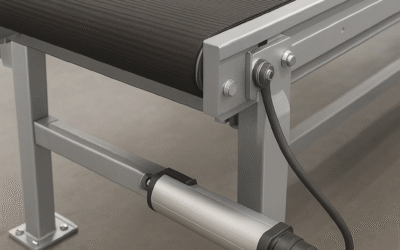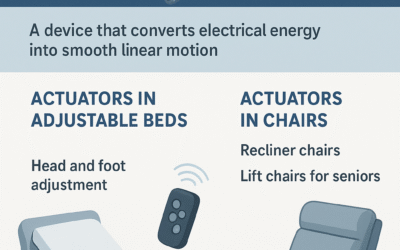BlogS
Automated Podium Mic Lift Systems Using Electric Linear Actuators
The conference hall was silent. The spotlight fell on the podium mic, and the audience waited.As the speaker walked up, the microphone slowly lifted from the podium — rising gracefully, almost as if it knew what to do.There was no technician adjusting it, no awkward...
Kitchen Chimney Automation with Electric Linear Actuator
Every morning, Meera begins her day in her beautiful modular kitchen. Sleek cabinets, a glossy countertop, and a chimney that keeps her kitchen Chimney fresh — everything seems perfect.But one thing always bothered her: cleaning and maintaining that heavy chimney...
Braking & Valve Control in Rig Machines with Linear Actuator Integrated Control System
Rig machines are critical in drilling, mining, and heavy construction industries, where precision, safety, and reliability are non-negotiable. Among the most important subsystems in these rigs are braking systems and valve controllers, which ensure controlled...
Conveyor Belt Height Adjustment Using Electric Linear Actuators
Conveyor belts are the backbone of modern manufacturing and logistics. They help move materials quickly, safely, and efficiently across different stages of production. But in many industries, fixed-height conveyors can become a limitation. Workers may need different...
Actuators for Automated Irrigation and Spraying Systems
Agriculture is evolving faster than ever. Farmers are adopting smart technologies to improve productivity, reduce labor, and use resources efficiently. One key technology that plays a major role in modern farming is the electric linear actuator. These actuators are...
Beds and Chairs Adjustments using Electric Linear Actuator
In modern homes, comfort and convenience are not just luxuries – they have become essential. Furniture like beds and chairs are no longer seen as simple, static items. Today, people expect them to adapt to their lifestyle, health needs, and daily routines. One of the...
Frequently Asked Questions(FAQ)
What is a linear actuator?
A linear actuator is a device that converts rotational motion into linear motion. It is used to move objects in a straight line
What are the benefits of using a linear actuator?
The benefits of using a linear actuator include precise and controlled linear motion, compact size, easy installation, and efficiency.
How do I install and maintain my linear actuator?
The installation and maintenance of a linear actuator will depend on the specific model and type. Refer to the manufacturer’s instructions for installation and maintenance guidelines.
What safety precautions should I take when working with linear actuators?
Always follow the manufacturer’s instructions and safety guidelines when working with linear actuators. Ensure that the actuator is properly secured and that the power source is disconnected before working on the actuator.
What is the difference between a linear actuator and a rotary actuator?
A linear actuator moves in a straight line, while a rotary actuator rotates around an axis. Linear actuators are used when linear motion is required, whereas rotary actuators are used when rotational motion is needed.
What is the difference between an electric linear actuator and a hydraulic linear actuator?
An electric linear actuator uses electrical energy to create linear motion, while a hydraulic linear actuator uses pressurized hydraulic fluid to create linear motion. Electric linear actuators are typically easier to install and maintain, while hydraulic linear actuators can generate higher force.
Can a linear actuator be used for precise positioning?
Yes, linear actuators are often used for precise positioning due to their ability to provide accurate and repeatable linear motion.
How do I determine the stroke length of a linear actuator?
The stroke length of a linear actuator is the distance the actuator can travel in a straight line. To determine the required stroke length, consider the distance the actuator needs to move to complete its intended task.
What are some common materials used to make linear actuators?
Linear actuators can be made from a variety of materials, including aluminum, stainless steel, plastic, and carbon fiber. The choice of material will depend on the specific application and environmental conditions.
Can a linear actuator be used in hazardous environments?
Yes, some linear actuators are designed for use in hazardous environments and are made from materials that can withstand exposure to extreme temperatures, chemicals, or other hazardous conditions.
Can a linear actuator be customized to fit my specific application?
Yes, many manufacturers offer customized linear actuators to fit specific applications. These can include modifications to stroke length, force, speed, mounting options, and environmental protection.






